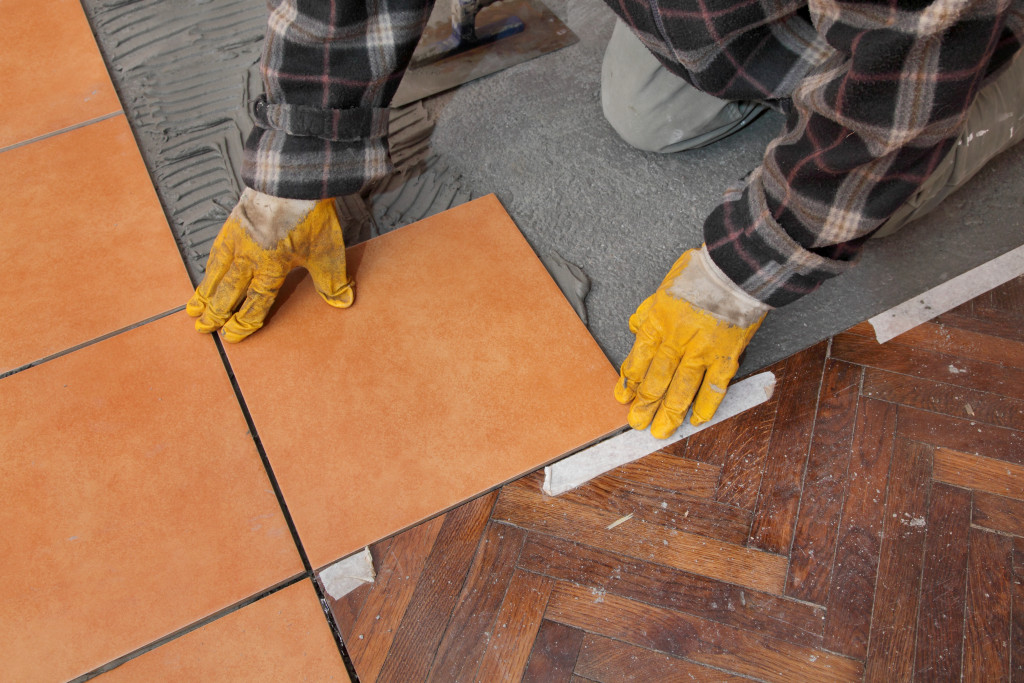- Improving the home increases comfort, adds value, and boosts mental health.
- Bringing nature in with indoor plants, living walls, and natural materials is beneficial.
- Indoor air quality is essential for human health and can be improved by reducing pollutants and using air filters.
- Water quality is critical to a healthy home and can be improved with a water softener system.
Improving the home is vital for many reasons. Firstly, it increases homeowners’ comfort and enjoyment of their living spaces. Secondly, it can add value to our homes, making them more attractive to potential buyers and resulting in higher resale prices. Studies show that investing in home improvements can yield a return on investment (ROI) of anywhere between 60% and 80%.
Moreover, home improvement can also positively impact people’s mental health and well-being. They spend much time in their homes, and a comfortable and aesthetically pleasing environment can help reduce stress and anxiety. In a recent survey by Houzz, 74% of respondents reported feeling happier in their homes after a renovation.
Improving the home will require careful consideration of budget and lifestyle needs. As a result, you might have to be picky with your home improvement projects, as time and money are limited. Here are a few end goals to pursue if you want an improved home:
Natural Elements

One of the best ways to improve your home is to bring nature in. Not only does this provide visual and sensory enjoyment, but it also has numerous health benefits. Exposure to nature can lower stress levels, improve cognitive function, and enhance creativity.
Here are four improvement projects that can help you achieve a more natural home:
Add Indoor Plants
Indoor plants are an easy and inexpensive way to bring nature into your home. Not only do they purify the air, but they also provide a calming presence. Snake, spider, and peace lilies are some of the best indoor plants for air quality. They require minimal care and can thrive in low-light areas.
Install a Living Wall
Living walls, also known as green walls, are vertical gardens that cover a wall or part of a wall. They can contain various plants and are a beautiful way to bring nature into your home. Living walls can be installed indoors and outdoors, and they can help purify the air and reduce noise pollution.
Use Natural Materials
Using natural materials like wood, stone, and bamboo can help create a more natural environment in your home. It’s important to choose sustainable materials that are harvested in an eco-friendly way. For example, bamboo is a fast-growing and renewable resource, making it an excellent choice for flooring and furniture.
Create an Outdoor Living Space
Consider creating an outdoor living area if you have a backyard or outdoor space. This can include a patio, deck, or garden space. It’s important to include natural elements like plants, water features, and natural stone. An outdoor living space can improve your mental health and increase your home’s value.
Indoor Air Quality

Poor indoor air quality can significantly impact human health, causing respiratory problems, allergies, and other illnesses. According to the Environmental Protection Agency, indoor air can be up to five times more polluted than outdoor air. This is due to a combination of factors, including poor ventilation, the use of household chemicals, and other factors.
Some of the most common indoor air pollutants include:
- Dust and allergens: Dust, pollen, and other allergens can accumulate in homes, causing respiratory problems for people with allergies or asthma.
- Secondhand smoke: Secondhand smoke from cigarettes or other tobacco products can cause respiratory problems and increase the risk of lung cancer and heart disease.
- Household chemicals: Many household cleaning products, insecticides, and other chemicals can release harmful fumes into the air, causing respiratory problems and other health issues.
- Carbon monoxide: Carbon monoxide is a colorless, odorless gas that gas appliances, such as heaters and stoves, can produce. Exposure to high levels of carbon monoxide can be deadly.
To improve indoor air quality, reducing these pollutants is significant. This can include using natural cleaning products, keeping your home well-ventilated, and avoiding smoking indoors. Additionally, installing air filters or purifiers can help remove pollutants from the air and improve indoor air quality.
Water Quality
Another critical component of a healthy home is water quality. Poor water quality can negatively impact health and comfort, causing skin irritation and other discomforts.
Installing a water softener system can help improve water quality by removing minerals from the water that cause hardness, such as calcium and magnesium. This helps reduce scale buildup in pipes, fixtures, appliances, and soap scum on baths and showers. It also helps improve laundry results by making clothes softer and brighter. Moreover, people with hard water may notice their hair becoming less dry after installing a water softener system.
Final Thoughts
Improving the home can be daunting, as there are so many options to consider. However, understanding your goals and taking them step-by-step can help make the process easier and ensure you get the best outcome possible. Whether adding natural elements, improving indoor air quality, or improving water quality, these improvements can contribute to a healthier and more comfortable home environment.
